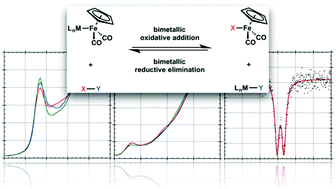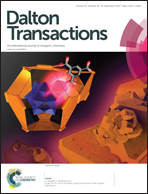Experimental determination of redox cooperativity and electronic structures in catalytically active Cu–Fe and Zn–Fe heterobimetallic complexes†
Abstract
Complexes of the type (NHC)M–Fp (NHC = N-heterocyclic carbene, M = Cu or ZnCl, Fp = FeCp(CO)2) have been used recently as replacements for noble metal C–H functionalization catalysts and for small molecule activation studies. The promising reactivity of these systems has been linked to the use of the late metal electrophiles Cu and Zn in place of early metal electrophiles, and also to the ability of the M–Fe pairs to cooperate during catalytically relevant multielectron redox processes such as bimetallic oxidative addition and bimetallic reductive elimination. Using Mössbauer spectroscopy and metal K-edge XANES analysis, a detailed electronic structure description of these complexes is presented. One unusual feature of the late-metal M–Fp interactions is the presence of significant M → Fe π-backdonation in addition to Fe → M σ-donation; this π-backdonation is absent in early metal analogues and is apparent from analysis of Mössbauer data and Fe K-edge data. Multi-edge XANES analysis of C–I bimetallic oxidative addition at a Cu–Fe reaction center reveals little change in metal effective nuclear charges during the two-electron redox process. IR spectroscopy indicates that the supporting carbonyl ligands participate to a large extent in the redox process.


 Please wait while we load your content...
Please wait while we load your content...